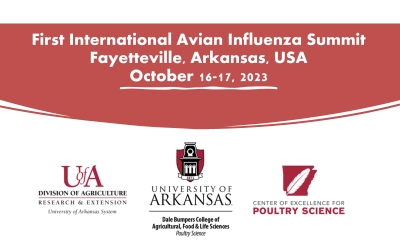The emergence of poultry-adapted H9 subtype avian influenza viruses
Authors: Daniel R. Perez
GMPC TOP
2023.
vol. 3, Iss. 1
pp:0-15
Doi: https://doi.org/10.51585/gtop.2023.1.0018

Abstract:
Avian influenza is a highly contagious disease that severely affects poultry production and food security. Several countries have developed vaccination programs to prevent and control avian influenza. Unlike currently available vaccines, modified live virus (MLV) vaccines have the potential to be easily mass-applied. Concerns of reversion, recombination, and unintended transmission have slowed the development of MLVs against avian influenza for use in poultry. To address these concerns, we generated reassortment-impaired, non-transmissible, safe, immunogenic, and protective MLVs based on the rearrangement of internal gene segments and additional modifications of the surface gene segments HA and NA. The HA was produced to carry the unique DRPAVIAN peptide marker, whereas NA was modified as a chimera encoding the chicken interleukin-18 (ckIL18) gene (MLV-IL). As a proof of principle and given its economic importance and widespread geographic distribution, we tested the MLV and MLV-IL approaches in chickens against a prototypic H9N2 low pathogenic avian influenza virus (MLV-H9N2 and MLV-H9N2-IL, respectively). In-vitro, the MLV-H9N2 and MLV-H9N2-IL candidates were stable and achieved yields similar to the wild-type H9N2 strain. Co-infection studies with a wild-type H9N2 virus showed that the altered HA segment in the MLV-H9N2 and MLV-H9N2-IL candidates has a fitness disadvantage and did not reassort. Likewise, the modified NA segment in the MLV-H9N2-IL candidate was impaired in reassortment. In-vivo, the MLV-H9N2 and MLV-H9N2-IL candidates did not transmit chicken-to-chicken via direct contact. MLV-H9N2- and MLV-H9N2-IL-vaccinated chickens showed no clinical signs upon intranasal vaccination, and all were seroconverted. More importantly, including ckIL18 in the MLV-H9N2-IL vaccine enhanced the generation of neutralizing antibodies, suggesting a role in the host immune response. A significant decrease in viral loads post-challenge demonstrated the protective effect of the MLVs. The MLV-H9N2-IL vaccine administered via drinking water was immunogenic in chickens in a dose-dependent manner and generated levels of neutralizing antibodies after prime and boost predictive of protection, which was later confirmed upon aggressive homologous virus challenge. In summary, this work provides the basis for novel and safe MLVs against avian influenza amenable for mass vaccination
Keywords:
Influenza, H9N2, Vaccine, Modified live virus, MLV, HA, Immune response
Statistics:
Article Views: 967
PDF Download: 7